19 Types of Pine Trees In California (With Pictures)
-
Elizabeth Gray
- Last updated:
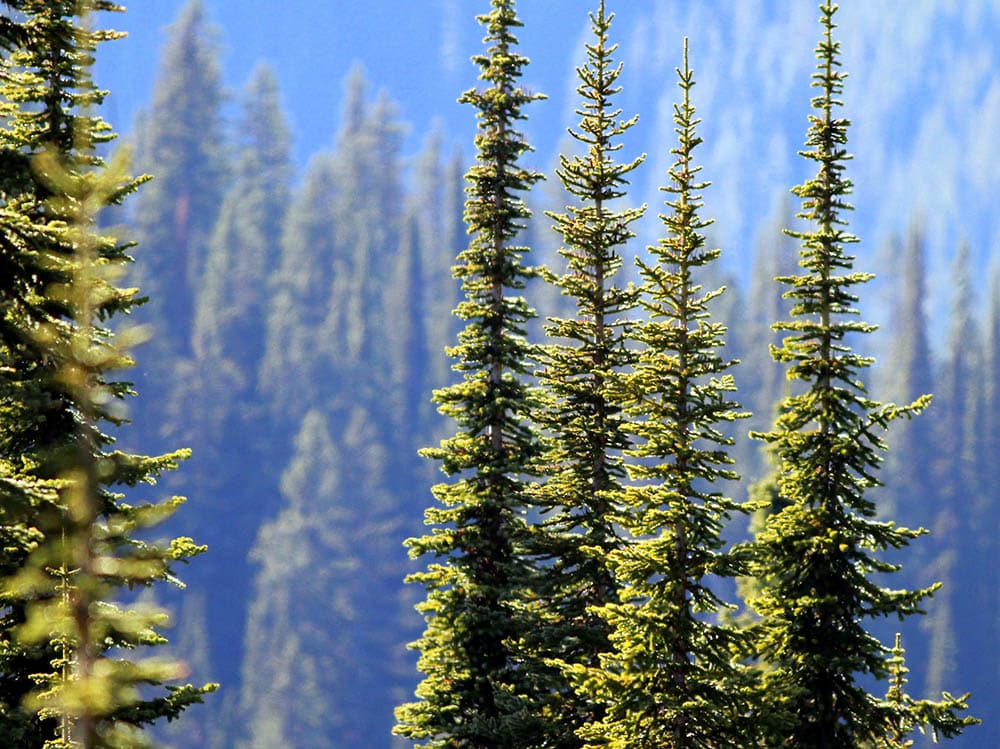
When you think of California, beaches and celebrities are probably the first things that come to mind. Those unfamiliar with the landscape of the Golden State might assume that palms are the only trees they will see. However, away from the coast, California is home to miles of rugged terrain and wooded mountains. Much of these forests are made up of pine trees, including a few that grow only in California. Here are 19 types of pine trees you’ll find in California.

The 19 Types of Pine Trees In California
1. Ponderosa Pine
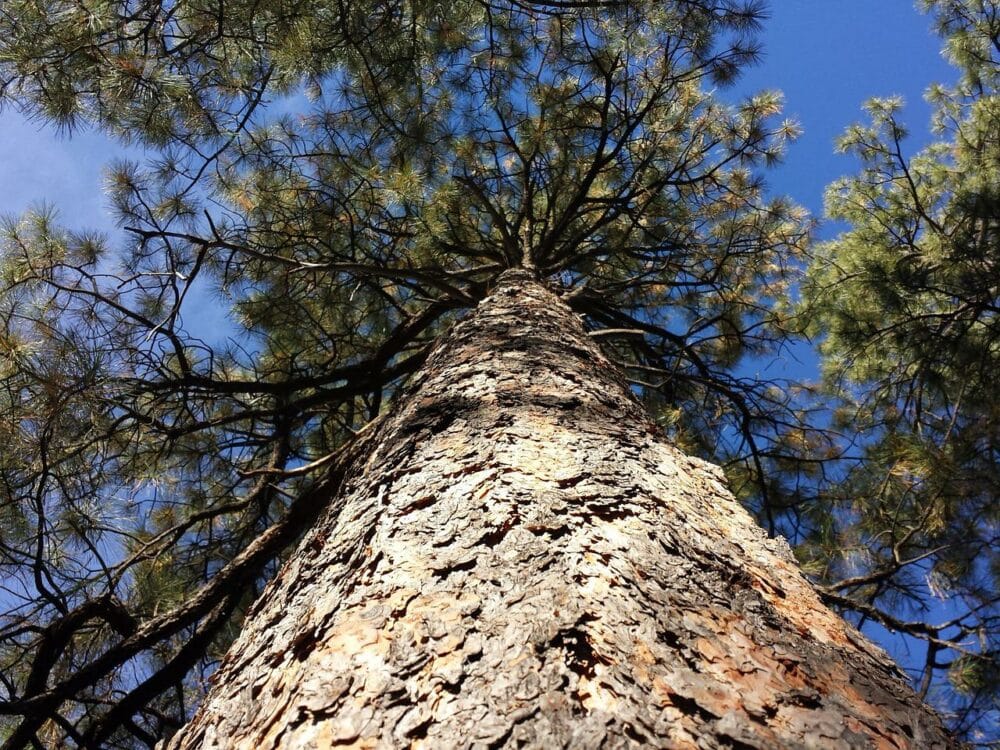
| Scientific name | Pinus ponderosa |
| Height | 40–223 feet |
The Ponderosa Pine is common in the Western United States, including California. It is a mountain tree growing primarily in the foothills and mid-height peaks of the Sierra Nevada and other mountain ranges in the state. Ponderosa Pines attract many butterflies, moths, and birds. They prefer sandy, well-drained soil and partial shade lighting. The species is easy to care for with minimal water requirements. They produce yellow flowers in the spring and come in 4 different subspecies adapted to different climates.
2. Western White Pine
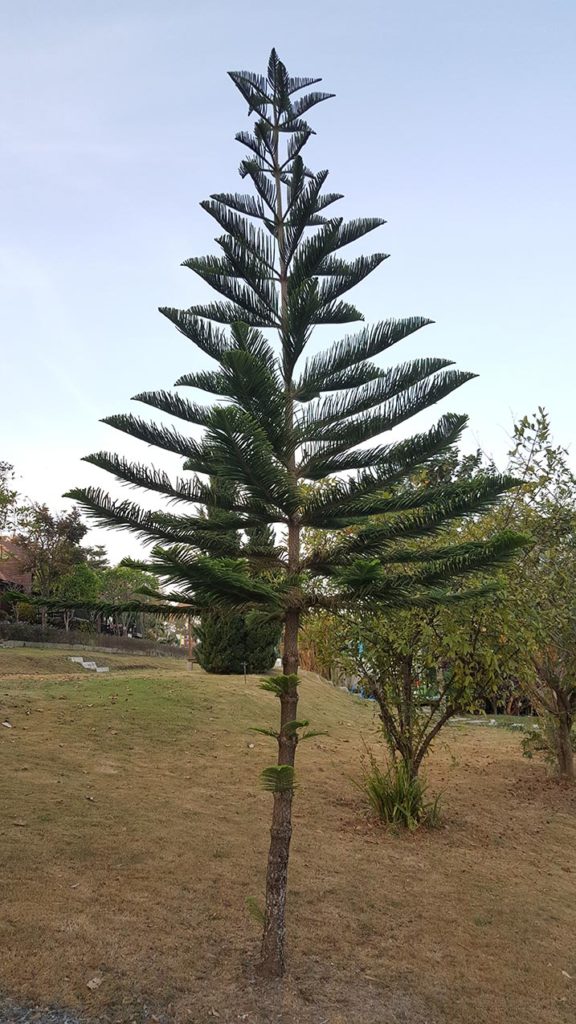
| Scientific name | Pinus monticola |
| Height | 35–230 feet |
Western White Pine is a fast-growing species that grows primarily along mountain ranges in the Western United States. In California, it lives in the Sierra Nevada range from the northern to southern part of the state. These trees can grow very tall, with soft, green needles growing in bundles of five. Unlike many pine species, Western White Pines go dormant in the winter months. The trees attract many insects and grow in full sun to partial shade. They are not common in landscaping due to their size.
3. Torrey Pine

| Scientific name | Pinus torreyana |
| Height | 25–150 feet |
The Torrey is the rarest pine in the United States. In California, it grows naturally only in San Diego County and the Channel Islands and is listed as endangered. In the early 20th century, the wild population of this tree dropped as low as 100. With conservation, the number has grown to about 3,000. The Torrey Pine grows in dry, sandy environments and requires little water to survive. This tree is often used as an ornamental and can grow fast and tall with better soil and watering. The Torrey Pine is a habitat and food source for birds, insects, and small mammals.
4. Single-leaf Pinyon Pine
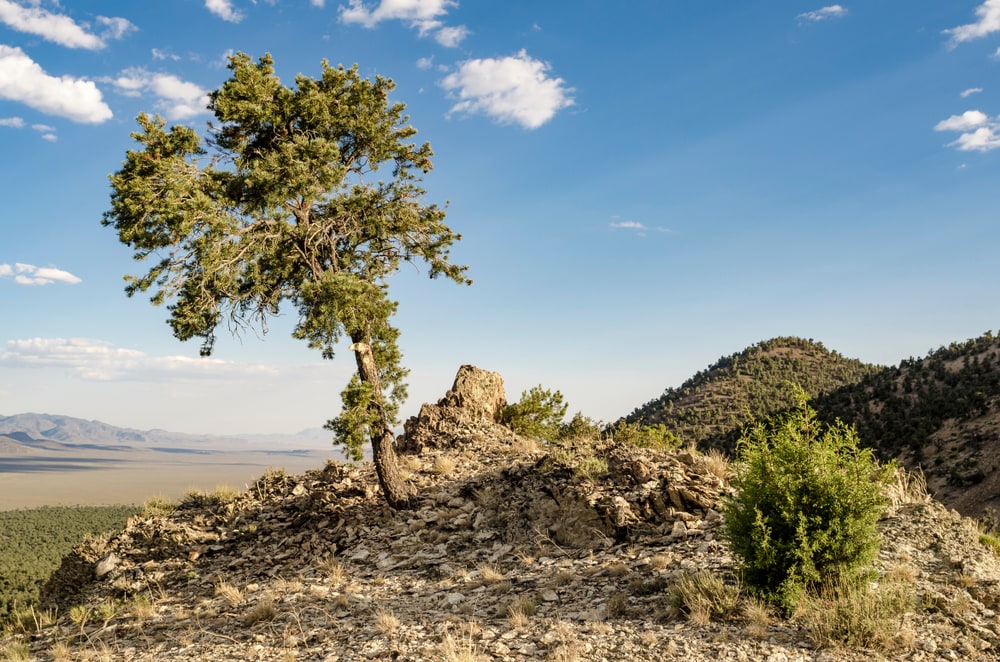
| Scientific name | Pinus monophylla |
| Height | 20–66 feet |
Also called the Oneneedle Pinyon Pine, this small tree is found in some of the driest regions in California. It grows in the mountain ranges of California at moderate elevations. The Single-leaf Pinyon is unique among pines because the needles grow one at a time rather than in clusters like most species. This tree grows very slowly in full sun to partial shade lighting. The pine nuts (seeds) of the Pinyon are an essential food source for many birds and small mammals. They are also edible for humans.
5. Knobcone Pine

| Scientific name | Pinus attenuata |
| Height | 26–118 feet |
The Knobcone Pine grows in dry, rocky mountain soil, primarily in Northern California, with a few populations scattered in the mountains of Southern California as well. This tree can grow even in poor conditions, but its height may suffer, causing it to be more of a shrub. Young Knobcone Pines have smooth, gray-brown bark. As they age, the bark furrows and becomes more of a dark gray-reddish brown color. This tree can grow in full sun to partial shade environments and attracts many butterfly and moth species.
6. Great Basin Bristlecone Pine

| Scientific name | Pinus longaeva |
| Height | 16–52 feet |
Also called the Hickory Pine, this is one of three closely related bristlecone species. The Great Basin Bristlecone grows at high elevations in the Sierra Nevada mountain range. It has bright orange-yellow bark and green to bluish-green needles, which can maintain their color for as long as 45 years. Great Basin Bristlecone Pines grow in full sun to partial shade and attract various insects. If growing in a maintained environment, they should be pruned during the winter months.
7. Foxtail Pine
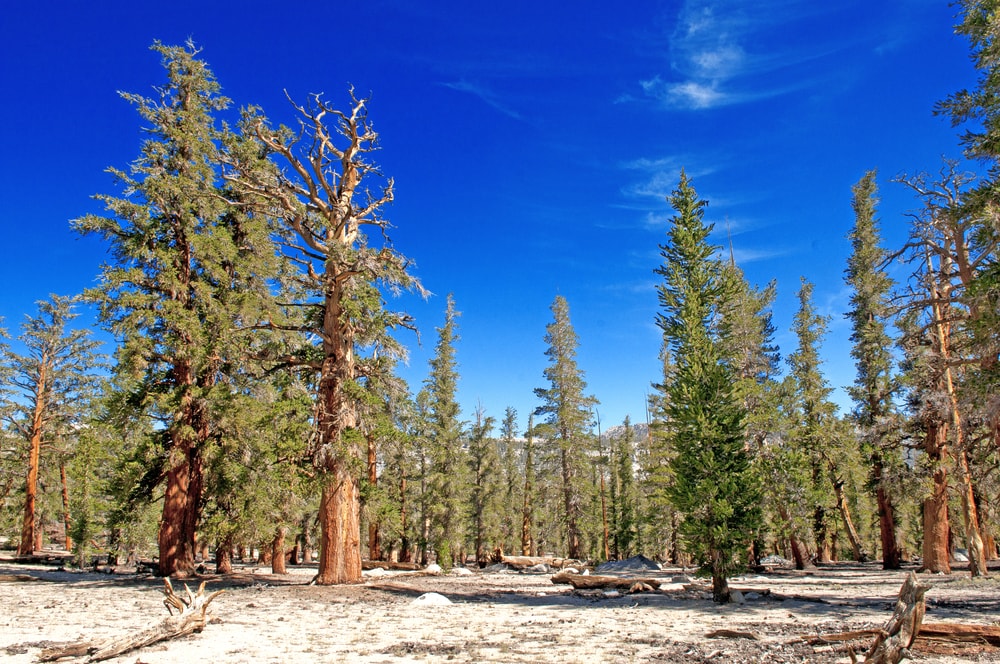
| Scientific name | Pinus balfouriana |
| Height | 33–72 feet |
Foxtail Pines are rare and native only to California. They grow only in two mountain ranges: the Southern Sierra Nevada and the Klamath in Northern California. Foxtail Pines grow in subalpine forests and are often the final treeline species on taller mountain peaks. They are cone-shaped trees with deep green needles in bundles of five. Foxtails produce dark purple cones that fade to reddish-brown as they ripen and open and attract many insects.
8. White Bark Pine
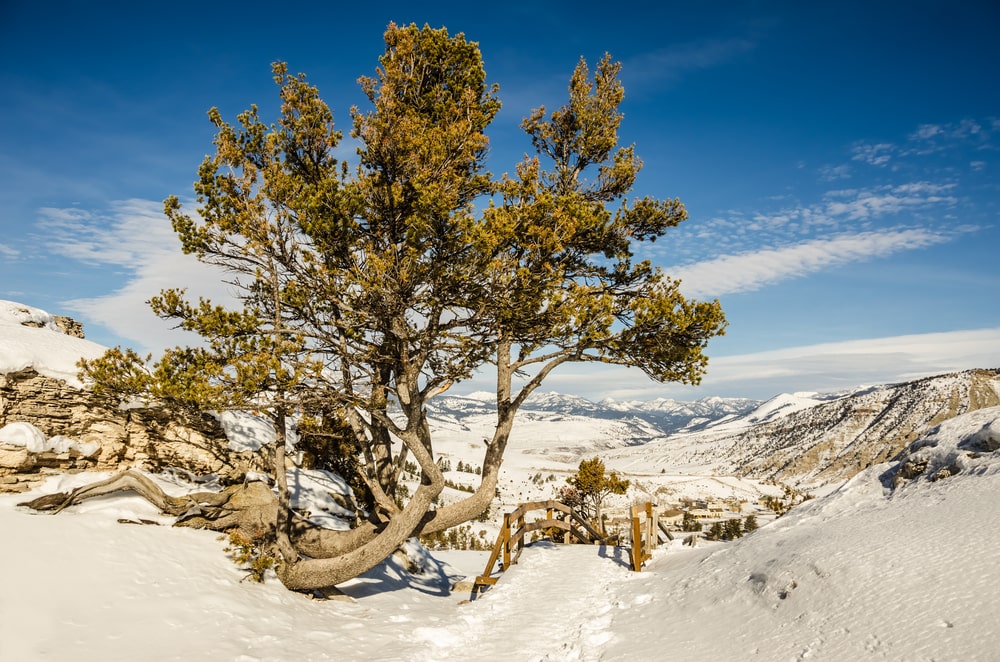
| Scientific name | Pinus albicaulis |
| Height | 15–85 feet |
Also known as the Dwarf, Pitch, Scrub, and Creeping pine, this species grows high in the mountains throughout the Western United States. In California, it occurs in the Sierra Nevada subalpine areas, often as the tallest tree. Because it grows in such harsh conditions, wild White Bark Pines are often stunted in height. In better-protected locations, it may reach as high as 85 feet. White Bark Pine prefers sandy soil conditions in full sun to partial shade. Like most pines, it attracts various insect species, including butterflies and moths.
9. Shore Pine

| Scientific name | Pinus contorta ssp contorta |
| Height | 112 feet |
The Shore Pine is a subspecies of Lodgepole Pines that grows primarily along the Northern coast of California. It can grow in a wide range of elevations from sea level up to over 11,000 feet. They have higher water requirements than many California pines, hence their coastal location. Shore Pines prefer more well-developed soil and grow in full sun to partial shade lighting. The trees often serve as erosion-control plants and attract many birds and insect species.
10. Monterey Pine
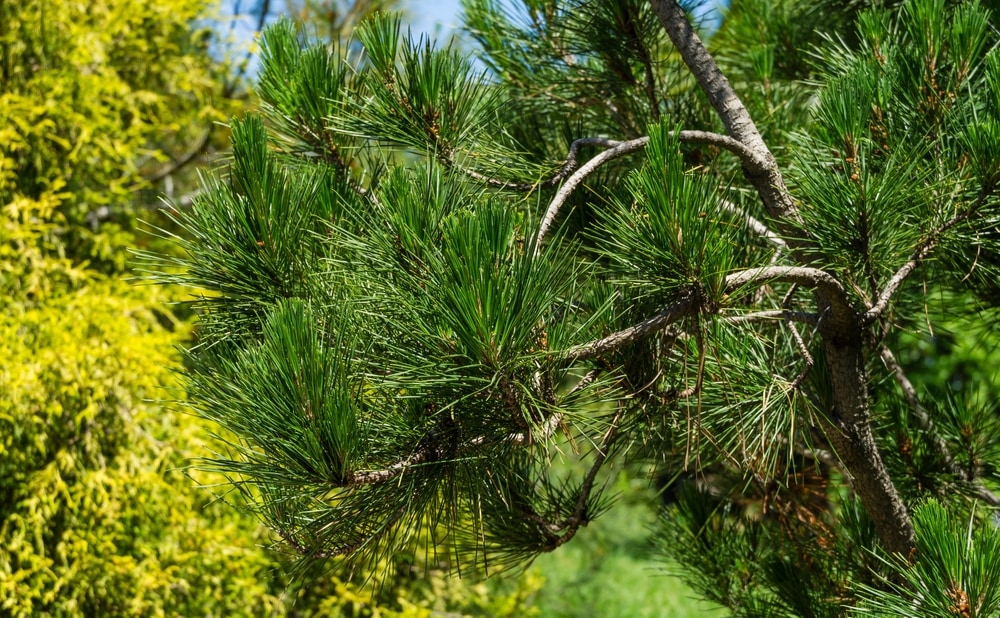
| Scientific name | Pinus radiata |
| Height | 49–197 feet |
Monterey Pine is native to three counties along the Central California Coast (including Monterey) and two other regions in Mexico. It rarely grows over 100 feet tall in the wild but can stretch as high as 200 feet if cultivated, watered, and fertilized. The needles are bright green and grow in clusters of three. Monterey Pines are adapted to cope with the frequent forest fires of California. The heat of the wildfire opens their pine cones, spreading new seeds to help regrow the forest. They require a lot of water and usually only live about 5 years.
11. Sugar Pine
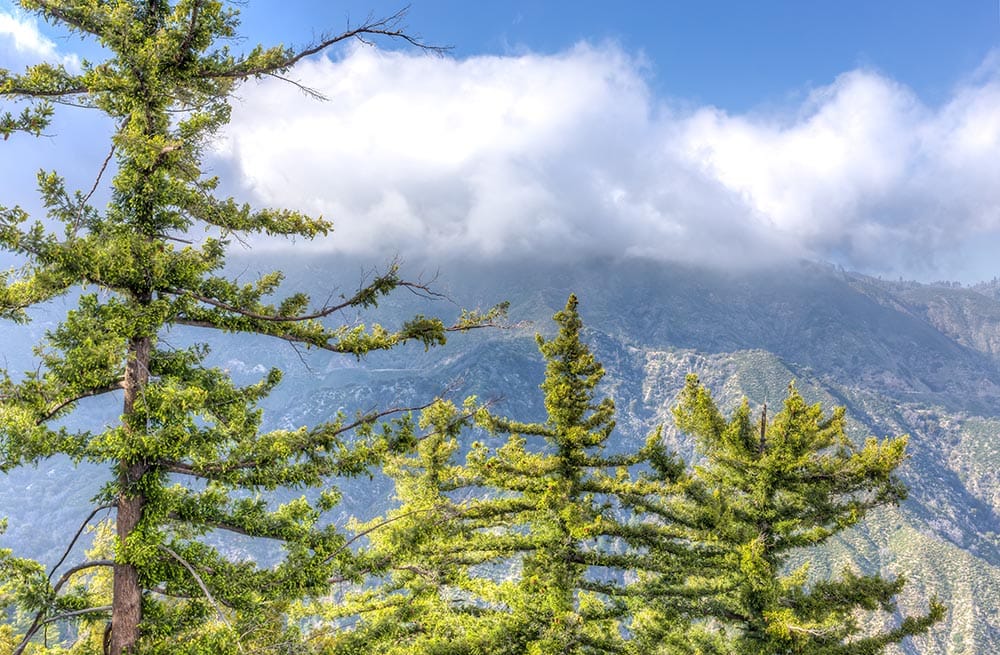
| Scientific name | Pinus lambertiana |
| Height | 40–230 feet |
Sugar Pine is one of the tallest wild pine species in California. They grow in coastal mountain ranges from Oregon, through California, and into Baja, California. They have soft needles in bundles of five and produce the longest cones of any conifer species. Sugar Pine cones are regularly 10-20 inches long but can exceed two feet in some cases. These trees grow quickly but are dormant during the winter months. They prefer sandy soil and full sun to partial shade lighting. Sugar Pines are another source of pine nuts edible to humans.
12. Bishop Pine

| Scientific name | Pinus muricata |
| Height | 35–90 feet |
Bishop Pines grow almost exclusively in California, except for a few places in Baja, California. They are coastal trees, drought-tolerant, and adapted to many soil types. When Bishop Pines grow in exposed areas, they often become twisted or stunted in size. These trees tolerate full sun to partial shade lighting. They bloom in the spring, producing orange flowers and attracting many insects and birds. Bishop Pines can be grown in cultivated environments but may disrupt local ecosystems if grown outside its natural range.
13. Foothill Pine

| Scientific name | Pinus sabiniana |
| Height | 20–80 feet |
Foothill Pines are native to California, where they are found in all regions of the state. The tree is accustomed to growing in poor soil conditions and can be found at elevations up to 4,500 feet. In the wild, it grows slowly and tends to remain shorter. When subjected to regular watering and tending, Foothill Pines grow more quickly and can reach impressive heights. Its needles and branches are not very dense, allowing smaller plants and trees to be planted underneath it. This pine is an excellent choice for attracting insects, birds, and wildlife.
14. Jeffrey Pine
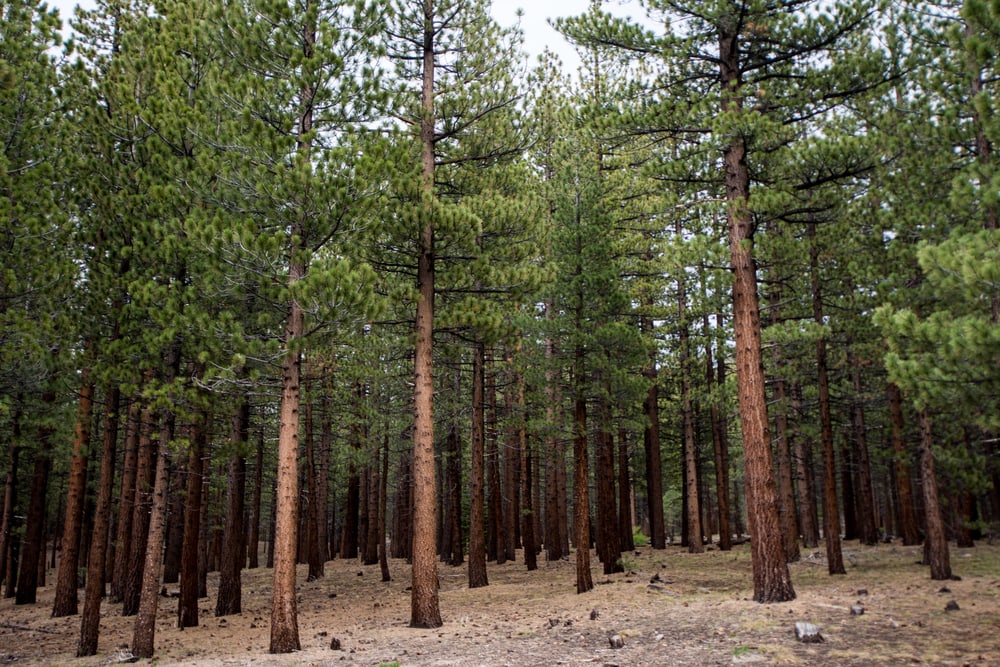
| Scientific name | Pinus jeffreyi |
| Height | 40–180 feet |
The Jeffrey Pine is related to the Ponderosa and is a high-altitude tree that grows along California mountain ranges. In Northern California, Jeffrey Pines grow between 4,900 and 6,900 feet. They live higher up in the warmer southern part of the state, between 5,900 to 9,500 feet. Jeffrey Pines are extremely hardy trees that are tolerant of drought, cold, and heat. They are a known host of the Pine White butterfly species. The bark of this tree has an unusual scent: not the typical “pine” fragrance made famous by air fresheners. The fragrance is sweeter, described as vanilla, lemon, apple, violet, pineapple, or butterscotch.
15. Coulter Pine
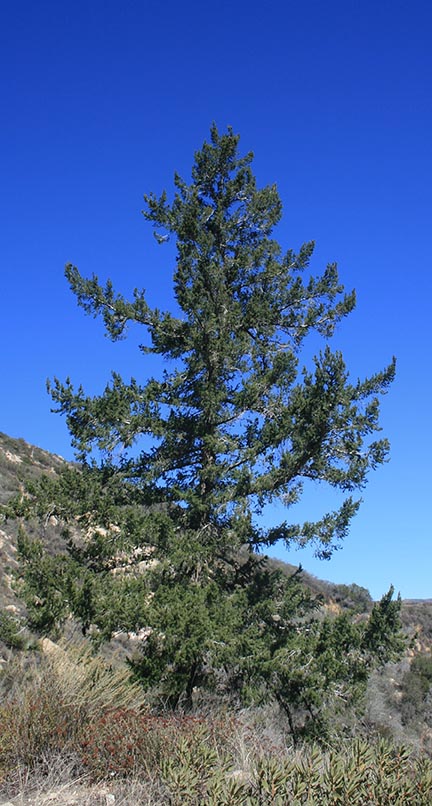
| Scientific name | Pinus coulteri |
| Height | 20–138 feet |
Coulter Pines are a coastal mountain species found primarily along the Central and Southern California coastline and as far north as San Francisco. It is a slow-growing tree that produces the largest and heaviest pine cones of any species. They can weigh 4–10 pounds, although they are not as long as Sugar Pine cones. The cones are so enormous that they are nicknamed “widowmakers.” The trees prefer dry, rocky soil and full sun to partial shade lighting. They attract and host butterflies, moths, and birds.
16. Nut Pine
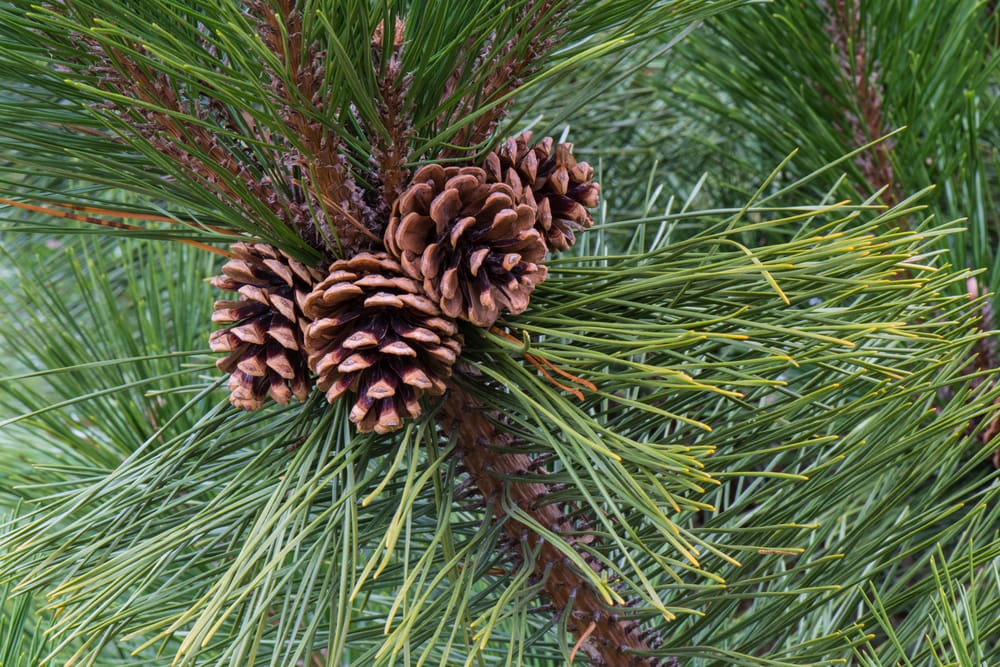
| Scientific name | Pinus quadrifolia |
| Height | 26 feet |
Also called the Parry Pinyon Pine or the Four-needle Pinyon, this small tree grows exclusively in Southern California and Northern Baja California. It is found scattered at medium altitudes, usually between 4,300 and 5,900 feet. The Nut Pine has rough, scaly bark and needles that grow in clusters. The tree produces many pine nuts (seeds) in its cones, which serve as a food source for birds, specifically the pinon jay. This bird also helps increase the Nut Pine population by collecting and storing nuts, some of which go to seed instead of being eaten.
17. Washoe Pine

| Scientific name | Pinus ponderosa var washoensis |
| Height | up to 115 feet |
The Washoe Pine is one of the Ponderosa Pine variations/subspecies we mentioned earlier. This version is shorter than the main Ponderosa species because it is adapted to grow in higher elevations and harsher climates. The Washoe Pine grows in subalpine forests in the northeastern corner of California and across the border into northwestern Nevada. It grows in rocky, sandy, and even volcanic soils in a climate of cold winters and minimal precipitation. This tree does not grow well in the shade and is relatively resistant to fire damage.
18. Limber Pine

| Scientific name | Pinus flexilis |
| Height | 25–82 feet |
Limber Pines are widespread at higher elevations in Western North American mountain ranges. In California, they are found on the eastern side of the Sierra Nevada mountains and in the San Bernadino mountain range. Limber Pines are often found serving as tree line markers, along with some of the other pines we already mentioned. They are slow-growing, especially in exposed areas, and go dormant in the winter. This species attracts many insect and bird species.
19. Santa Rosa Island Torrey Pine
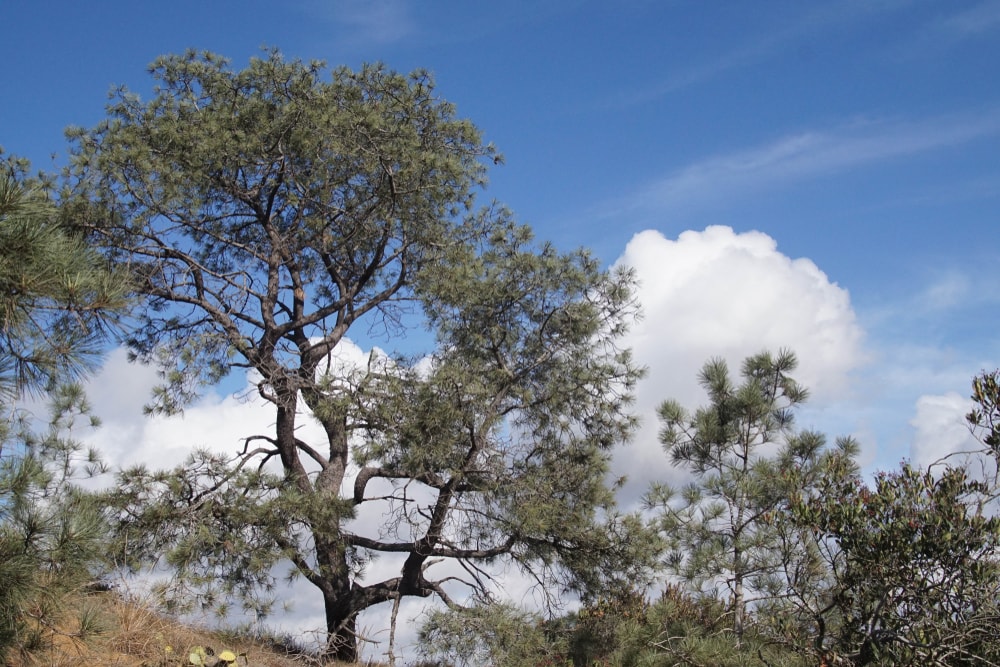
| Scientific name | Pinus torreyana ssp. insularis |
| Height | 30–45 feet |
This subspecies of Torrey Pine is endangered, with a limited range in California. It primarily grows in the Channel Island chain off the coast of Southern California. They are found in only a few locations on the islands, primarily sandy bluffs. Many live within the boundaries of Channel Island National Park, where they are protected and monitored by the National Park Service. Because there are so few of the trees, they have little genetic diversity and could be easily wiped out by environmental changes or new pests and diseases. Santa Rosas prefer partial shade environments and produce red and yellow flowers in the blooming season.

Conclusion
As you can see, pine trees are not an uncommon sight in California. These 19 species are all well-adapted to the unique climate found in the state, and many serve as important food and habitat sources within the local ecosystem. If you’re looking to add native trees to your yard or landscaping in California, several of the pine trees on our list might work well for you.
Featured Image Credit: Randy Bjorklund, Shutterstock
Contents